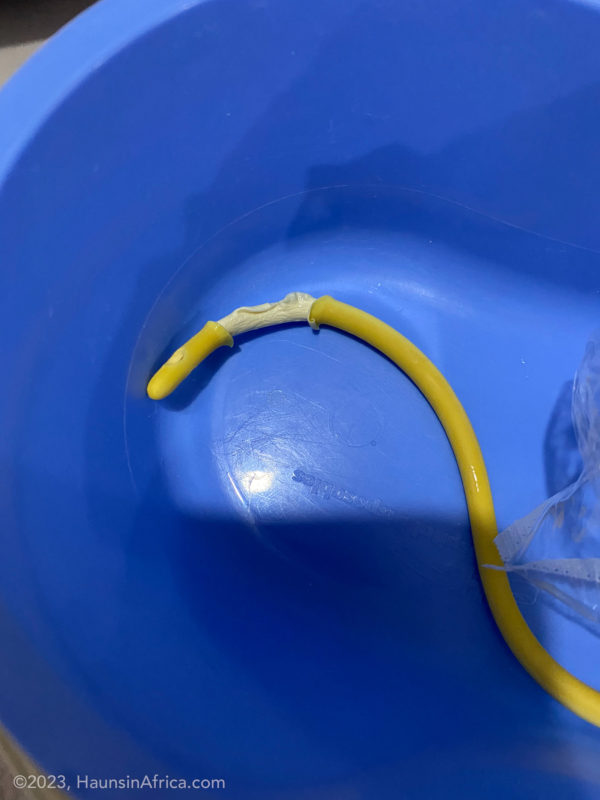Complications are inevitable. Best practices help to minimize complications, but because we live in a broken world complications are sure to come. Dealing with complications with integrity, humility and compassion helps to ease the suffering.
An 8 year-old boy became infected with typhoid which caused a perforation in his small intestines. As part of the preparations for surgery, a urinary catheter was placed to allow the doctors to monitor his kidney function by visualizing the color and amount of his urine in the perioperative period. He underwent abdominal surgery to fix the holes in his intestines.
After the operation, his urine was still very concentrated and his body swelled. For these reasons, the catheter was kept in place for 2 extra days. Finally, the order was made to remove the catheter. A balloon at the tip of the catheter is inflated inside the bladder to prevent the catheter from accidentally being pulled out. When the time came to remove the catheter, attempts to deflate the balloon were unsuccessful. Multiple nurses and doctors tried to manipulate the catheter to no avail.
Sometimes when this happens, the balloon can be overinflated to the point of bursting and then it will remove. We tried this and it didn’t budge.
Ultimately, with the real-time help of bedside ultrasound, I was able to puncture the balloon by passing a needle through the abdominal wall, into the bladder and into the balloon. The catheter finally removed. After each time I have done this technique, I inspect the balloon to be sure it was completely removed. Every other time, the balloon has been intact.


This time, I could clearly see that part of the rubber was missing. A repeat ultrasound revealed it to be floating on top of the urine in the bladder.
I discussed the case with a urologist who works at the teaching hospital 100 miles away. He would be able to remove it by a scope placed through the urethra and into the bladder, but the patient would have to be transferred to his facility. The other option was for me to do a small surgery to remove the rubber piece. After discussing with the family, we chose the latter option.
In the operating room, another catheter was placed into the bladder and the bladder was inflated with saline. A small incision was made just overlying the bladder (not entering into the abdominal cavity). Once the bladder was opened, the force of the excess saline in the bladder pushed the rubber piece out!

I inspected inside the bladder for anything else, then closed up. The catheter remained for a week to allow the bladder to heal. When it was removed (thankfully with the balloon intact), the child had no further problems.
Because we were honest about the complication, the family showed understanding and gratitude that we were able to appropriately deal with the problem and the child was able to return home healthy.